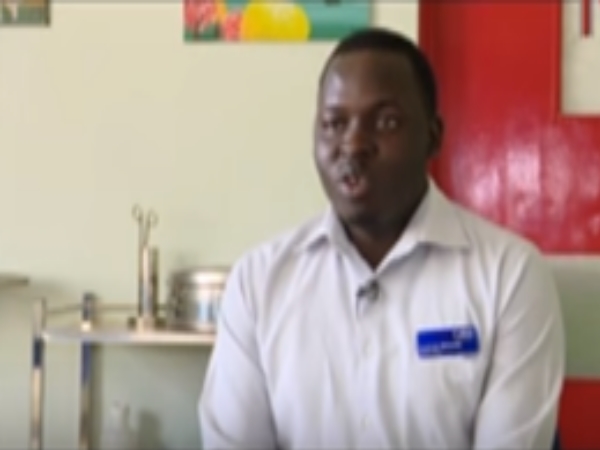Paul Kayonga’s children were born normal but as soon as they clocked six years and onwards changes began. “Their calves would get so swollen that they would become hard.” It all started with his first child Richard whom he suspected to be having polio and thought perhaps he hadn’t been attended to by a qualified doctor. Paul took him to Mulago National Referral Hospital and after six months of checkups, the medical personnel told him that they couldn’t find anything wrong but gradually the boy deteriorated. “I was at home and they came carrying him sayings the boy had refused to walk. At the first, I thought it was a pretense.”
The next child Gerald, Richard’s follower presented similar symptoms which later got worse and the school asked to keep the boys home since they couldn’t cope in a normal school environment. Paul and his wife then took to looking after these young adults whose handicap meant they were cared for like babies. “Eventually, when he had lost all his strength and looked like an AIDS patient, my eldest son died at 25 years.” Shortly after Richard died aged 25, Gerald passed on at the age of 24. When Julius his fourth born turned 8, the same pattern manifested. The once healthy bubbled boy began to lose his strength. “With that one, I have not bothered that much, I have no money and I’m also hypertensive. I resigned to my fate and told him to wait on the Lord. Then the others fell ill too.”
About five years ago, Paul Kayonga’s wife apparently tired, packed her bags and left. He started caring for his three sons on his own. According to doctors, Paul’s former wife carried a gene and any other male child she might have would most likely have the same condition. “It’s an X-recessive gene; that’s how it is carried. So these conditions are seen in genes because boys have one X, so one abnormal X definitely shows that you are going to have that presentation. But if you have one abnormal X and one normal X, it won’t be seen; which is; girls at XX and boys have one XY.” Said, DR. Andrew Emyedu – Medical Officer, CORSU. These cases were so rare that not much attention had been given to the condition but research was underway and an online search showed that so far gene therapy tested on dogs had been successful paving way for human clinical trials. In the meantime, the boys were struggling and barely surviving. “They have difficulty getting up from the sitting position, someone needs to hold onto something then as they are getting up they use the legss to support themselves and then stretch up the body and then eventually walk. So that’s the first stage usually seen at five years then at around eight, they walk but the heel does not touch the ground then they have a Sudo hypertrophy of the calf muscles, the muscle is big not because they are so strong but it’s fat and some little muscle. Then eventually they become wheelchair born because they can’t go about.”
Kayonga had a 21-year-old daughter who was normal but his three boys aged 15, 12 and 8 were already showing goer signs at different stages. The disease could be fatal. “It starts with the skeletal muscles; so we are talking at muscles that help you move your legs and your hands. But if it progresses, it affects the muscles responsible for breathing; the diaphragm specifically. So they have difficulty in breathing which becomes worse at night and may usually die due to respiratory failure.” A fellow resident of Paul’s village Seganga in Gobelo in Wakiso district suggested that he tries out CORSU hospital and he brought his eldest son. The day we visited, the three boys were to have a biopsy done on each of them to determine what kind of muscle dystrophy they had? “There are two conditions if you have like the milder form, then the most severe form which is the Duchene muscle dystrophy. So there is one; the milder form, we do some physiotherapy to increase muscle power, they can do that. Then the other one we do some Physiotherapy but we know the cause; it’s a poor prognosis, so we usually try to prolong the process. Do some exercises then we provide wheelchairs, some need respiratory support; oxygen maybe at night then we need to treat all the infections so they can live as long as they can.” In two weeks, Paul Kayonga will know what exactly has plagued his family that he has not had answers for, for over eighteen years.

